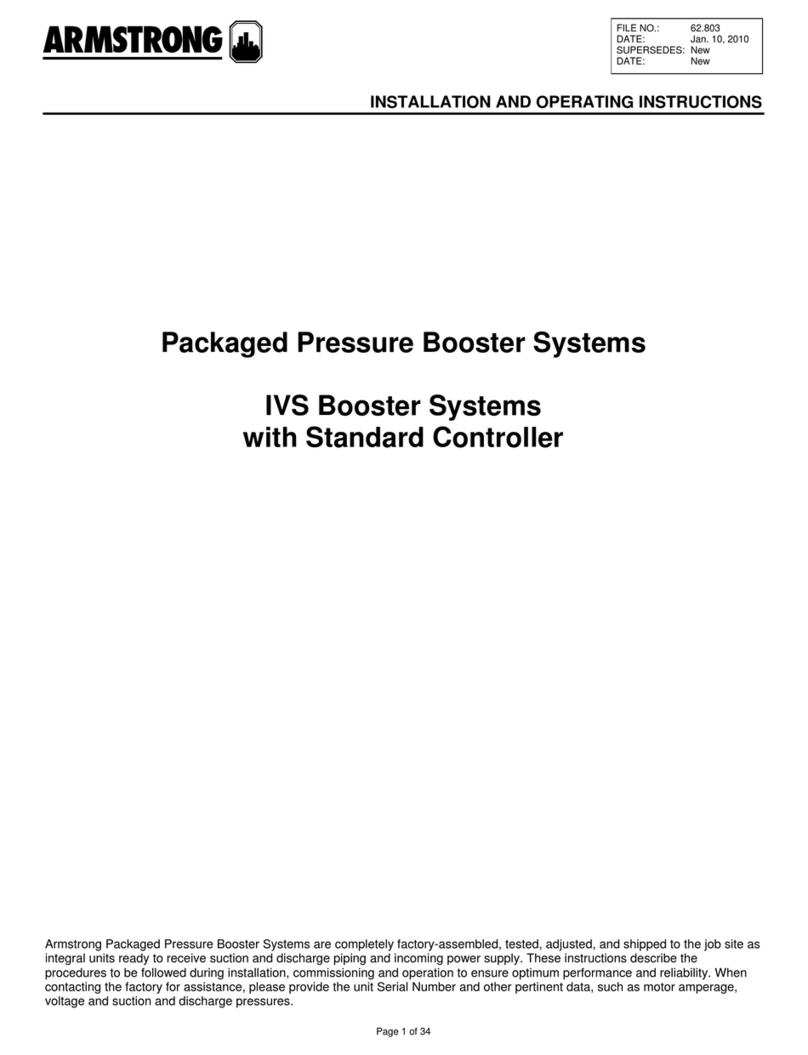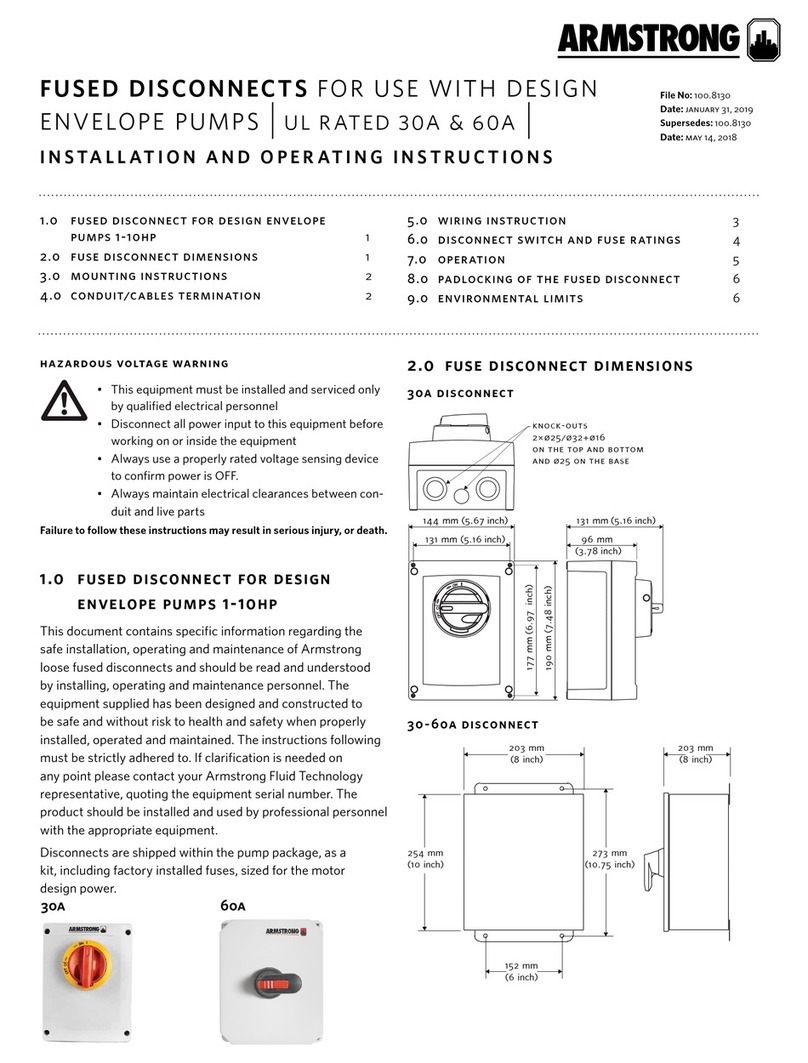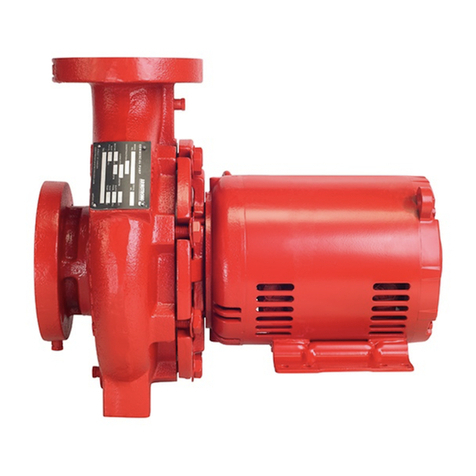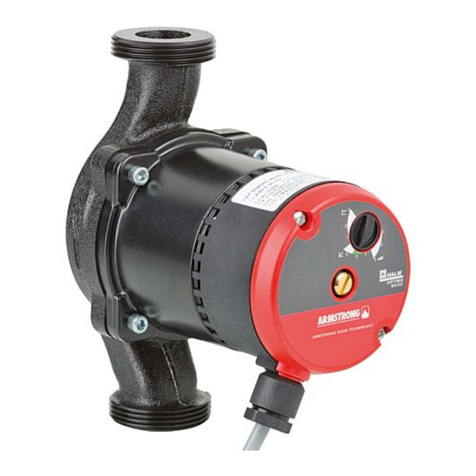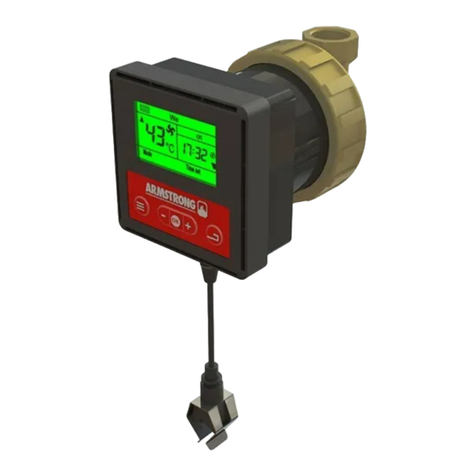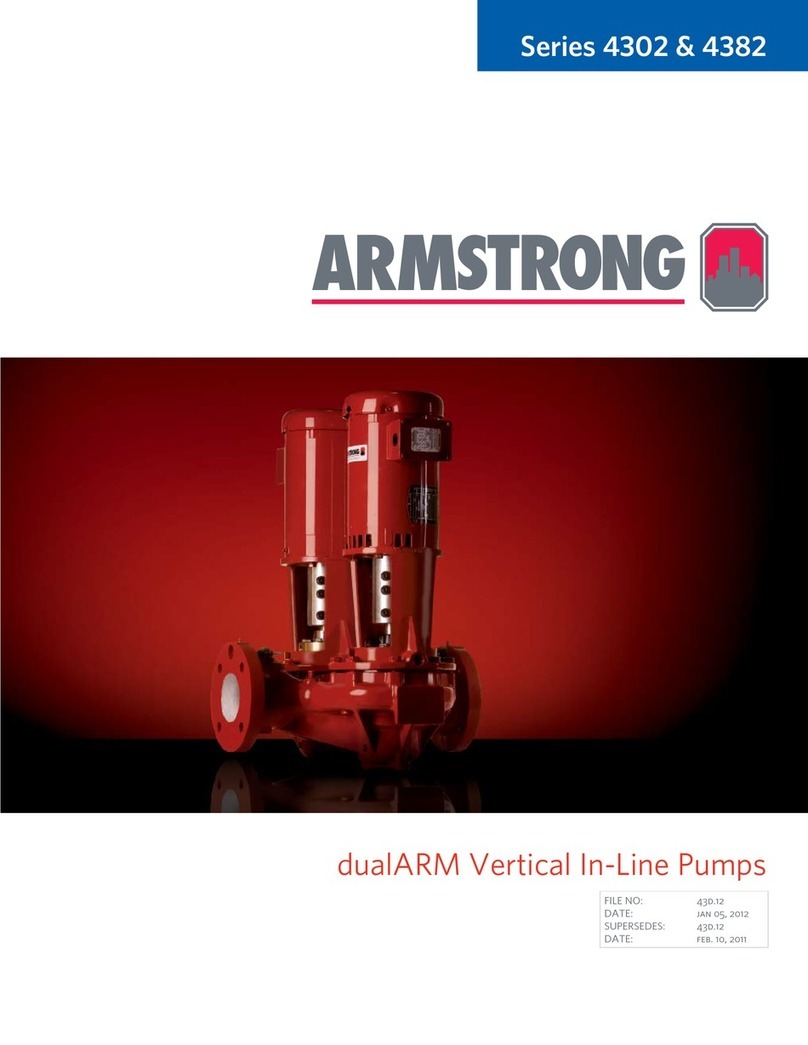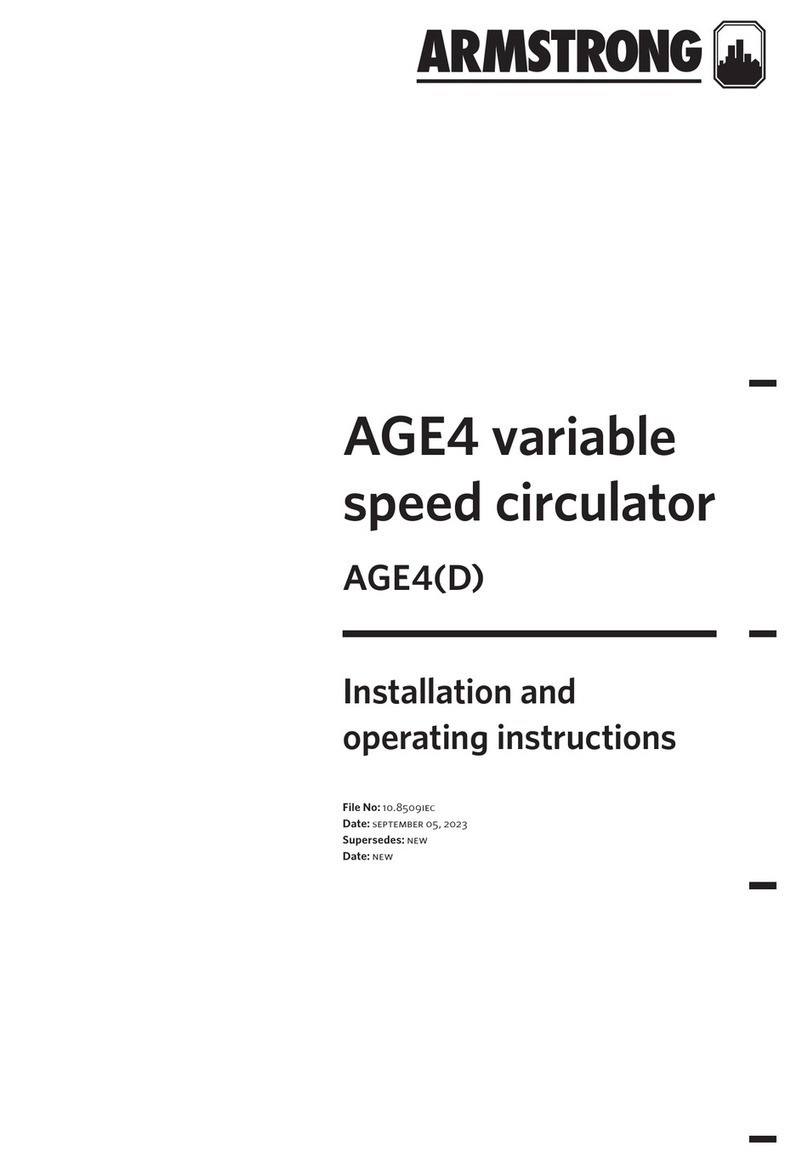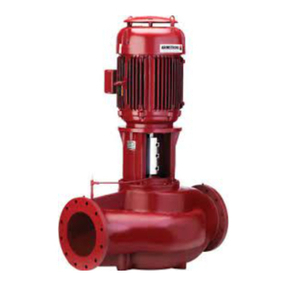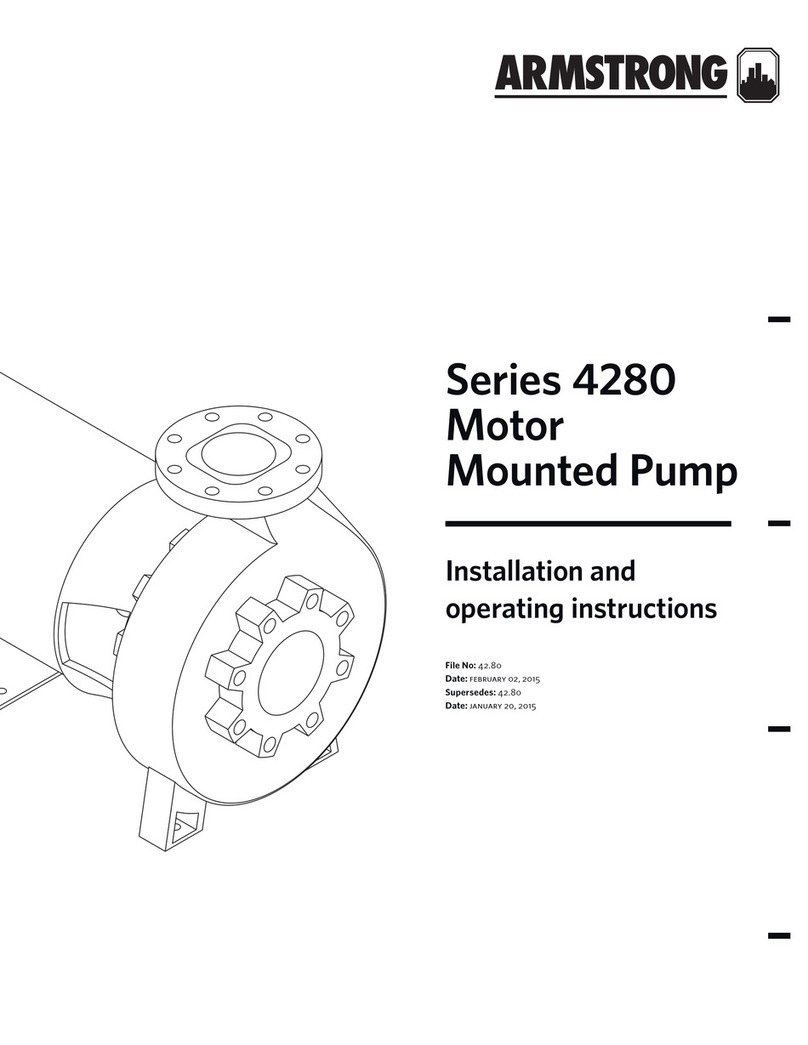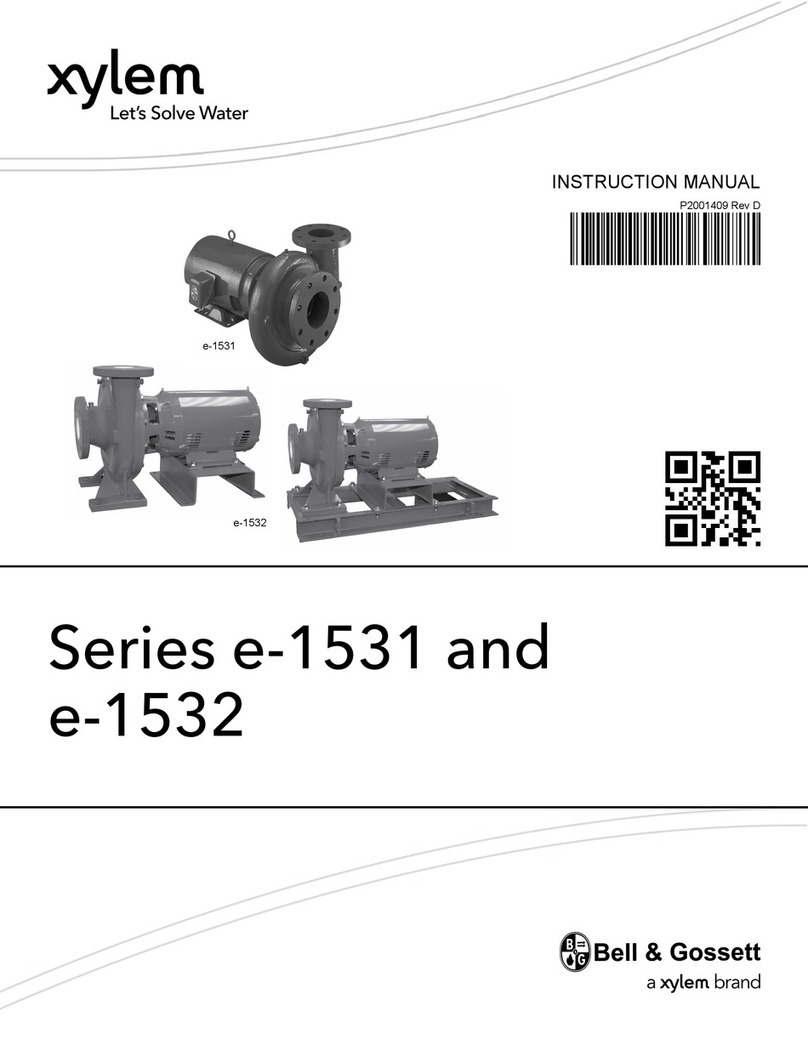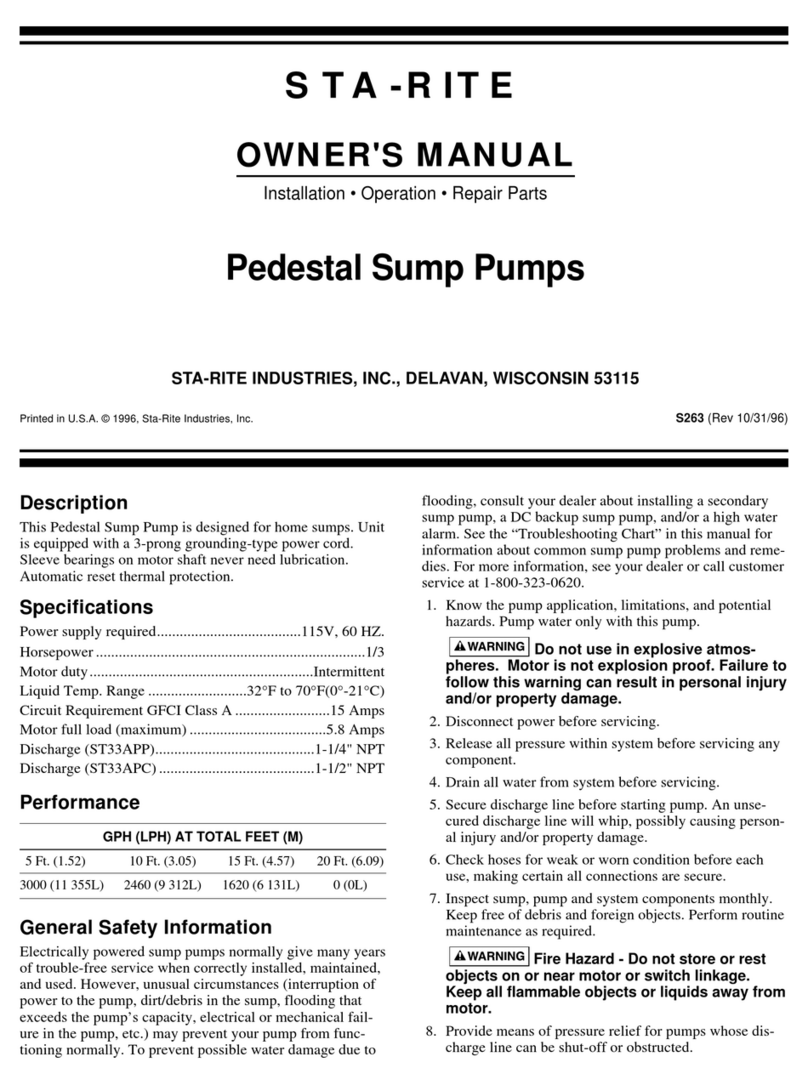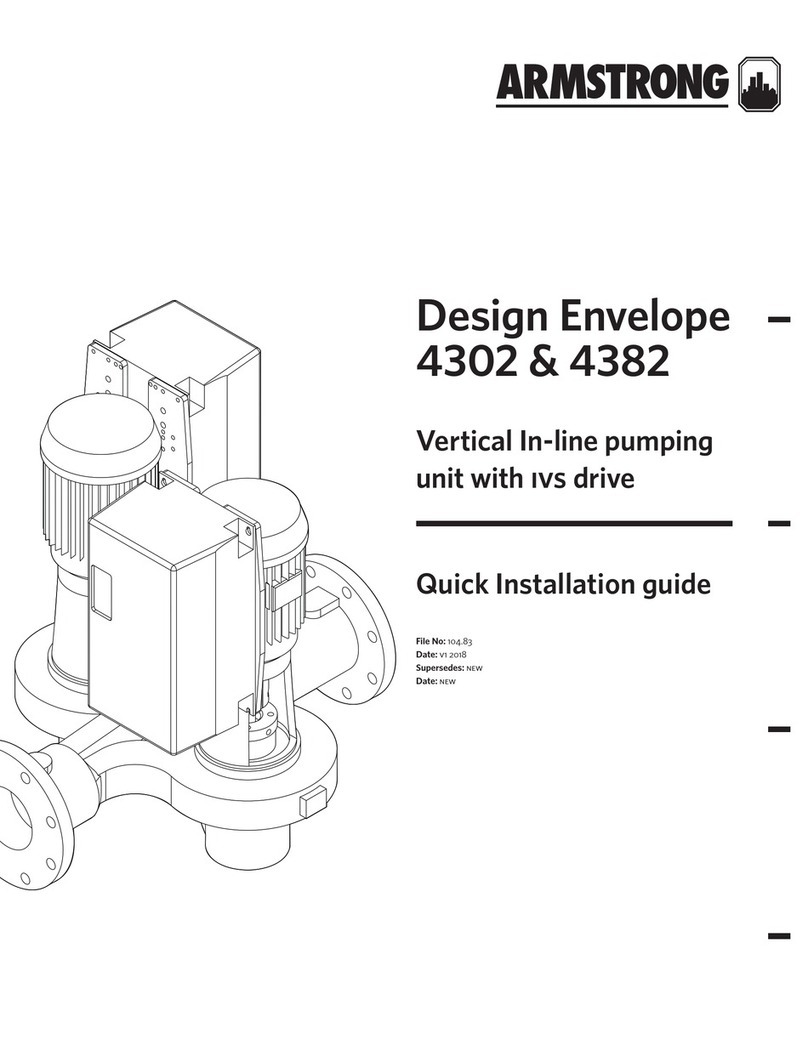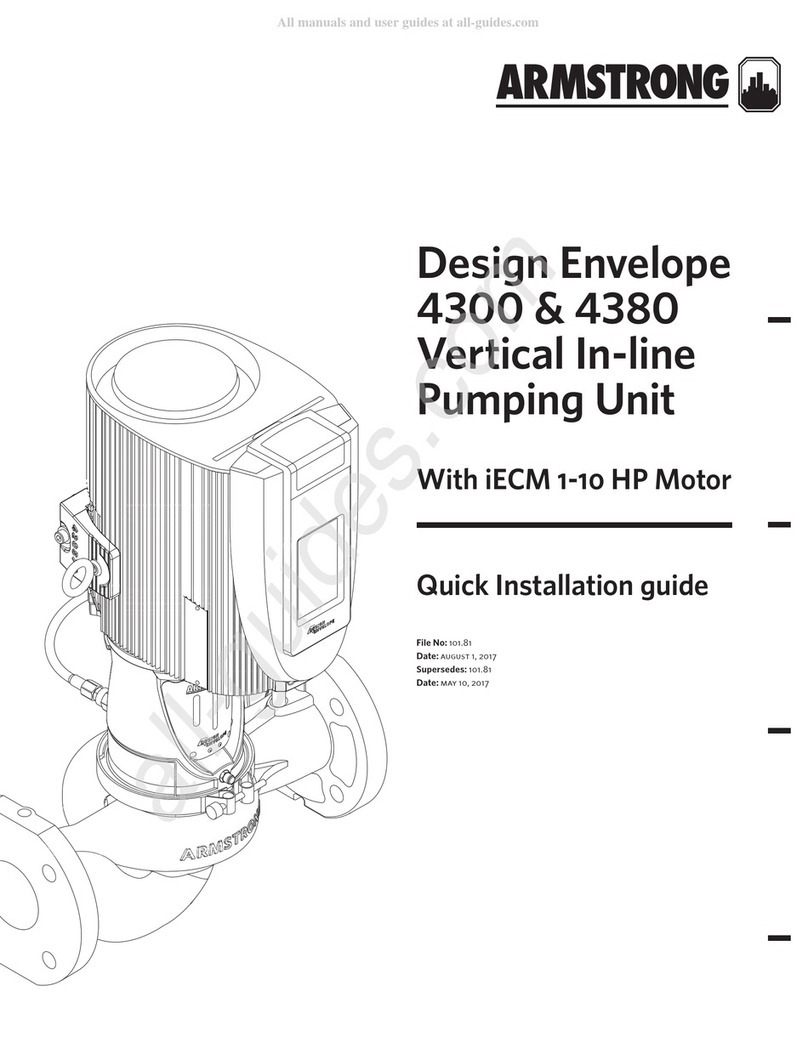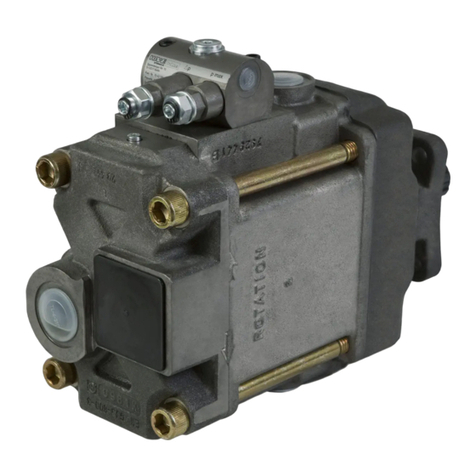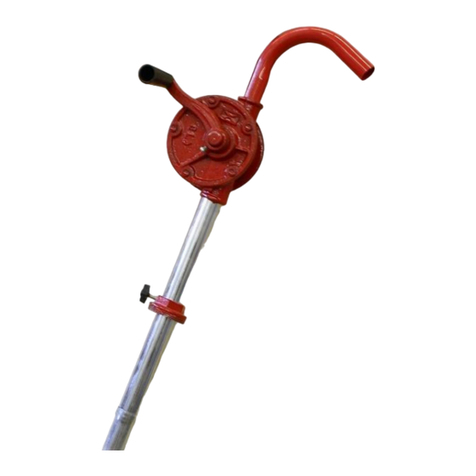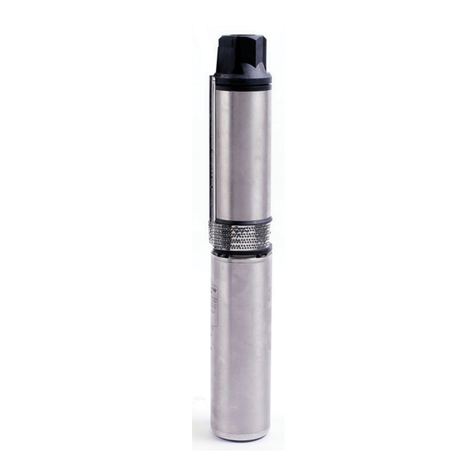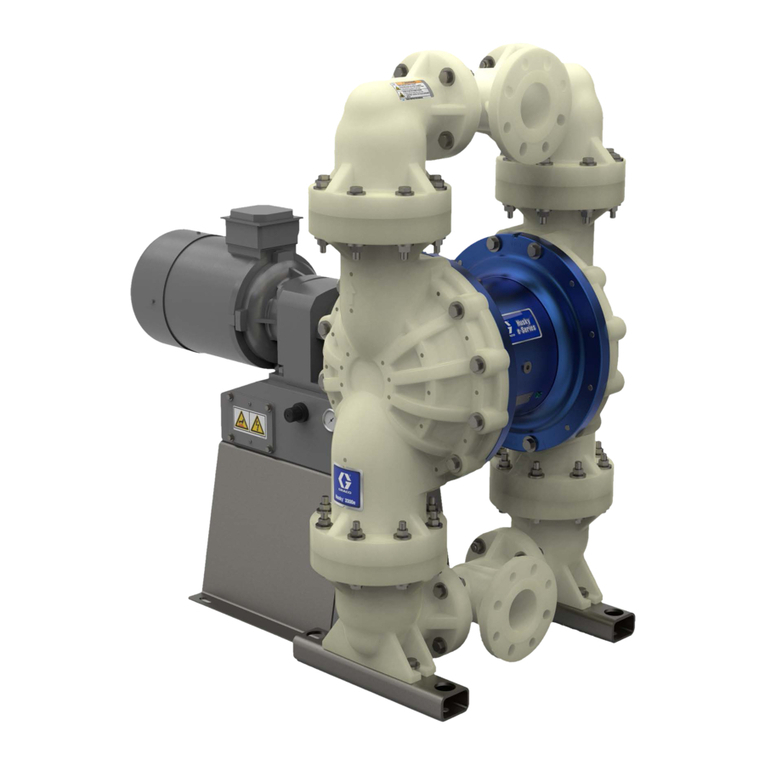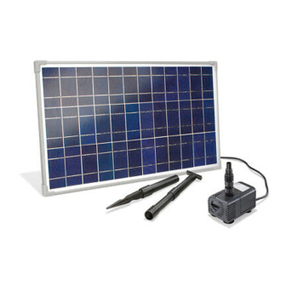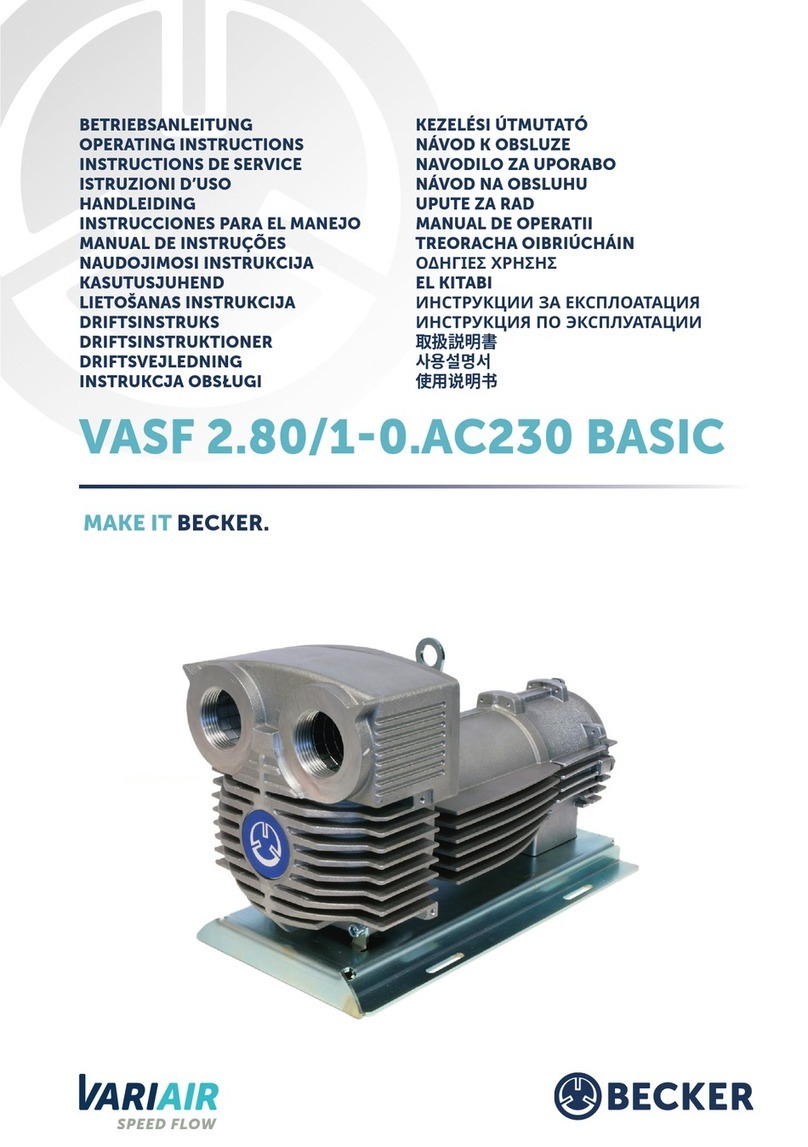
installation &
operating instructions
Design Envelope 4300 & 4380 Vertical
In-line pumping unit with ivs drive
7
f
Where required, additional floor support may be used as shown
in fig. 1.6. Note that the pump should not be rigidly attached
to the column. Leave a small gap between pump and column or
install a wae isolation pad under the pump. It is critical that
piping be installed in such a manner that the pump does not
become a pipe support.
g
fig. 1.7 illustrates stanchion plates at the pump inlet and
outlet ports that may be supplied for installation convenience.
Isolation pads must be used under the legs and monitored as
pipe hangers are adjusted to ensure the pump flanges are not
supporting the piping. Bolting to the floor or housekeeping pad
is not recommended. If the stanchions are bolted down the
bolts must be isolated from the stanchion or an inertia base
and flexible pipe connectors used.
h
fig. 1.8 illustrates installations with stanchion plates for seis-
mically active regions. Seismically rated isolation pads or snub-
bers with bolts isolated from the stanchion plates are installed
to restrain the pump during a seismic event. Pipe hangers carry
the weight of the equipment as seismic components are de-
signed only to restrain the equipment during a seismic event.
i
Many Vertical In-Line pumps are piped successfully into
grooved piping systems. In-line pumps are supported well
by grooved piping however flange adapter locking devices
or a welded flange at the pump should be used to prevent
the possibility of pipe mounted pumps rotating in the piping.
Armstrong oers grooved suction guides with cast-in outlet
flanges and Flo-Trex valves with Armgrip™ fittings to prevent
this possibility. (fig. 1.9)
j
Do not support the unit by the motor eye bolts (fig. 1.10) or by
any other part of the motor.
k
Connecting the pump to a permanent rigid base (fig. 1.11) is
not recommended unless isolated from the piping by flexible
connectors and the base isolated from the building structure on
an inertia base. (fig. 1.11 is generally acceptable when using
plastic piping).
l
The motor and integrated control assembly can be rotated
in 90° increments to meet installation spacing requirements.
Where applicable, remove the coupling guard to access the
motor bolts.Remove the motor bolts to rotate the motor and
integrated control assembly by hand.Larger motors may
need strapping and slight lifting to break the contact with the
pedestal.Care should be taken that the controls are not dam-
aged during lifting and that the flushline, accessories and the
coupling guard removal/seal service window are not compro-
mised following the turn (fig. 1.12).vil pumping units without
integrated controls can also be rotated in a similar manner to
facilitate access to the the motor terminal box.
m
For d1 and d2chassis ivs units (150 hp–350 hp), ensure ad-
equate space is available for the access door to swing open.
(fig. 1.13)
important:
All Design Envelope 4300 pumps contain a tapped hole in the
motor bracket above the discharge flange (see Fig. fig. 1.14)
for draining the well. Pipe this drain hole to a floor drain to
avoid overflow of the cavity caused by collecting chilled water
condensate or from seal failure.
1.2.3 pump piping – general
Never connect a pump to piping, unless extra care is taken to
measure and align the piping flanges well. Always start piping
from pump.
Use as few bends as possible and preferably long radius elbows.
Do not use flexible connectors on the suction or discharge of a
vertical in-line pump, unless the pump is rigidly mounted to a
foundation.
Ensure piping exerts no strain on pump as this could distort
the casing causing breakage or early failure due to pump
misalignment.
All connecting pipe flanges must be square to the pipe work
and parallel to the pump flanges.
Suction and discharge pipes may be increased or decreased at
pump nozzle to suit pump capacity and particular conditions of
installation. Use eccentric reducers on suction connection with
flat side uppermost.
Layout the suction line with a continual rise towards the pump
without high points, thus eliminating possibility of air pockets
that may prevent the pump from operating eectively.
A strainer of three or four times the area of the suction pipe,
installed in the suction line, will prevent the entrance of foreign
materials into the pump. V" (3mm) diameter perforations in
the strainer is typical.
In open systems, test suction line for air leaks before starting;
this becomes essential with long suction line or static lift.
Install, at the pump suction, a straight pipe of a length
equivalent to four or six times its diameter; this becomes es-

